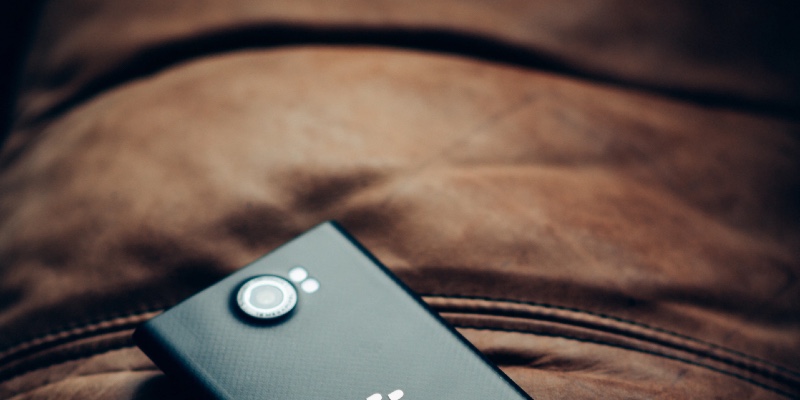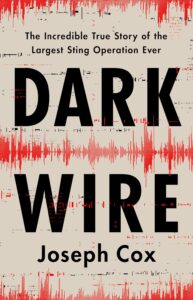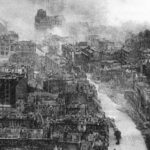In the early morning of September 9, 2015, Owen Hanson opened his Louis Vuitton bag and stuffed it with bundles of cash and three cell phones. The money was for gambling during the round of golf he was scheduled to have that day with a business associate. The phones were for orchestrating his dual empires: multimillion-dollar gambling and drug smuggling. He packed his golf clubs into his matte black Porsche, placed the bag on the passenger seat, and started the drive to the golf course.
Hanson didn’t look like a typical golf player of the time. Steroid use, intense workouts, and a spot on the University of Southern California football team years earlier gave him a John Cena-like physique more suited to a professional fighter. As he got into performance-enhancing drugs at USC in around 2004, he started to deal them as well, to a list of clients that included professional athletes. Before long, Hanson moved on to selling recreational narcotics, like cocaine and ecstasy. After the 2008 financial crisis he was at the helm of BetODog, his illegal gambling enterprise that took bets on every sport from the NBA to the NFL.
One betting client worked for the Sinaloa drug cartel. That relationship snowballed into Hanson moving cash for the Sinaloa contact across San Diego and Los Angeles. Southern California was a great place to be a drug dealer, given its proximity to the Mexico-US border, and offered plenty of space for promotions. At a blistering speed from 2012 onward, Hanson leapfrogged into wholesale drug trafficking. He shipped cocaine to Australia, where a kilo was worth a massive eight times what it cost in the US. For drug traffickers, Australia was a gold mine. There were hurdles to getting the drugs in, but if they did get in, smugglers faced a massive payday. Hanson was part of this gold rush himself. His latest deal was to sell five kilograms of methamphetamine to the business associate he was about to play golf with, a man named Al Wilson.
When Hanson was looking for ways to launder the proceeds of his criminal activities from Australia back into the US, he used some unconventional methods, such as smuggling gold coins hidden in UGG boots. He also cashed out drug proceeds through casinos. Wilson, a money launderer, suggested he wanted to work with Hanson.
Hanson first met Wilson at another golf course in early 2015, when one of Hanson’s Australian contacts introduced them. After a round of golf, Hanson, Wilson, and two of Wilson’s crew hit a bar in a country club. Wilson pulled out his phone, a modified BlackBerry that only sent encrypted text messages. This made it impossible for law enforcement to wiretap the phone in any traditional way. All the cops would have seen was gibberish, a garble of digits, letters, or symbols that masked what the text message actually said. The device went further still and had the camera, microphone, and GPS removed. The phone really wasn’t much of a phone at all; it couldn’t make voice calls. Hanson recognized the type of phone when Wilson pulled it out because it was the same brand of encrypted phone he used. Hanson’s Sinaloa contact had refused to work with him unless he got one. “Anybody who has a phone is obviously in the world of crime,” Hanson later said, recalling his reaction to seeing Wilson’s device. Al Wilson looked like the real deal. And he was more than just a money launderer. He wanted to traffic drugs with Hanson.
Hanson still needed a bit more convincing before jumping into business with Wilson. The company that made the custom phones was Phantom Secure, with its head in Vancouver, Canada, and with resellers spread around the world. These resellers acted as both vendors and gatekeepers. Phantom Secure’s workers sold phones to people if they were referred by an existing customer, which kept the client base mostly isolated to criminals. Hanson asked Michael Gamboa, also known as Chino, one of Phantom Secure’s distributors in Los Angeles, to check how exactly Wilson had managed to get one of the encrypted phones. Chino was Hanson’s main contact at Phantom Secure and sold him around three phones a year for many years.
“Chino, I’m not going to do business with these guys unless you can verify that they have been referred by one of you guys, and that they’re legitimate,” Hanson said. What if Wilson wasn’t a criminal at all and was instead a law enforcement agent trying to trap him?
In response, Chino shut down Wilson’s Phantom Secure device as a precaution and then set about finding out who these people were. Chino contacted Wilson’s crew: Who were you referred by? he asked. The group said they were directed to Phantom Secure by another criminal gang out of San Francisco that was in the marijuana business.
Phantom Secure had been working with that group for years.
About two hours after Hanson’s request, Chino came back to Hanson: these guys were on the up and up, don’t worry.
That was enough for Hanson. He was in.
Hanson told Wilson he felt better after hearing from his Phantom Secure guys that he had been with the company for a year.
“All good, now let’s go earn,” Hanson wrote to Wilson.
As soon as Hanson got Chino’s confirmation, he sent one of his runners to deliver five kilograms of cocaine to Wilson in the pair’s first deal in September 2015. The two agreed the deal would take place at a hotel in Del Mar, a town in California, for $90,000. He later followed up with five kilograms of methamphetamine. Hanson and Wilson were in business.
Hanson had anywhere from five to fifteen of his own crew using encrypted phones at any one time. Those members were on a closed network, which meant they could only message one another on their special devices. Almost no outsiders were able to text them, and vice versa, keeping them more secure from investigators. Hanson told Wilson to buy a couple more new phones so he could join Hanson’s dedicated network. Hanson didn’t want to use whatever network Wilson was already on. He was part of Hanson’s inner circle now.
Like Wilson, Hanson flashed his encrypted phone too. This was his contact in Australia, another in Italy, another in Mexico, he showed an associate. Hanson picked the handle Don Corleone; he was obsessed with classic gangster films and TV. When he partied with a former NFL star, he wore a T-shirt memorializing the crime epic Goodfellas. The logo for his gambling organization included a nod to the iconic opening sequence of The Sopranos, and The Godfather.
Those stories were works of fiction. Through sheer force of will, Hanson turned his fixation with Hollywood’s gangsters into a reality. He poured over a million dollars into a restaurant with what he described as a “wise guy room,” which had a whiskey bar, poker table, wine collection, and ventilated section for smoking cigars indoors. At one of his homes he kept a silver-plated AK-47, also with a Louis Vuitton logo, that he boasted about to friends. The closest thing to a real criminal mentor in his life was Jan Portocarrero, the head of a gambling organization that Hanson betted with as a customer before creating his own. Portocarrero did resort to violence at times, but he was not a drug trafficker or smuggler. Without anyone to introduce him to those businesses, Hanson used crime movies as his template, and took the violence and intimidation much further. On at least one occasion he hired an enforcer on an hourly wage to beat up a client who failed to pay what they owed. To one person, who he believed owed him $2.5 million, a video was sent of two attackers murdering another two men. One of the killers started to behead the first bound victim with a chainsaw.
The second attacker then decapitated the next victim with a knife. A message in the video read, “If you don’t pay us money, this will happen to you.” After that, the person who’d received the video started to find a way to pay back Hanson in earnest. The message, through the gratuitous violence of a cartel-style video, had gotten through.
***
Hanson felt something was off even before he got into his Porsche. The night before, his drug boss in Mexico had sent him an ominous message, using their own encrypted phone: “You’re about to meet the DEA agents at the golf course,” the boss, whom Hanson called El Jefe, wrote. They were suspicious because of Wilson’s request for Hanson to specifically provide methamphetamine a few days earlier. Hanson had never sold meth before, but meth was the drug that Wilson wanted to buy. To El Jefe, that was a red flag. Meth, El Jefe thought, led to harsher prison sentences in the US. One of Hanson’s workers was able to secure the meth from the Mexican contacts without much effort at all, but El Jefe was still suspicious.
Hanson arrived at the golf course at around 6:30 a.m. and saw a white F-350 pickup truck in the parking lot. Odd, he thought: when patrons are paying $400 per round of golf, usually they had more expensive cars than that. Except for the pickup, the car park was eerily empty.
Hanson was still forty- five minutes early for his meeting with Wilson so he drove to a nearby McDonald’s to get some breakfast. He ordered two Egg McMuffins and an iced coffee, but after the message from El Jefe, he didn’t have the stomach for it.
Hanson didn’t have to stay in the US. He owned properties in Peru and Costa Rica. One home included a room dedicated only to storing expensive bottles of tequila. Another property had a hidden compartment underneath a bathtub for hiding the spoils of his trafficking. Hanson was building a $2 million house in Cabo San Lucas, a party city in Mexico. He had a fake Mexican ID, and, through his Mexican wife’s family, he was getting a fraudulent Mexican passport. Hanson had gotten close to Wilson and told him much of this. El Jefe even suggested Hanson flee to Mexico the night before his planned golf meet. “Just get down to Mexico, it’s your best option,” they wrote in another encrypted text message.
But here Hanson was, driving back to the golf course despite the warning signs and his own gut telling him something was wrong. In the car park, Hanson brought his Porsche to a standstill.
Elsewhere in the parking lot in a far-off vehicle sat Mick Mullally, an officer from New South Wales (NSW), Australia, organized crime squad. For four years, Mullally had been investigating Hanson and his dealings in Australia. Now that work was finally coming to a head as Mullally waited with the FBI to strike.
As Hanson went to grab his bag from the front seat of his Porsche, he turned around. That’s when law enforcement agents swarmed him, guns drawn. Hanson thought he noticed a helicopter whizzing above. Mullally, not able to lay hands on Hanson because this wasn’t the Australian’s jurisdiction, stood nearby as the US agents descended. “I was lapping it up,” Mullally later recalled with a laugh.
In the distance, Hanson saw more agents put Wilson in handcuffs. “Don’t say a word to him,” the agents said, as if Wilson were Hanson’s accomplice.
That’s when Hanson realized that Wilson was a setup. “I knew right away it was all an act,” Hanson later recalled. The bonding over drinks and golf. Wilson’s story that he wanted to work with Hanson. The recent handshakes over drug deals. None of it was real. Instead, Wilson’s behavior was a fabrication designed to catch Hanson right in the act of serious drug trafficking. That was why Wilson had asked Hanson to sell him multiple kilograms of cocaine and methamphetamine. As was now clear, El Jefe was right that Hanson was about to meet a bunch of investigators. El Jefe just got the agency wrong: the officials who arrested Hanson weren’t from the DEA. They were from the San Diego FBI.
Most ironically of all, one of the main things that Hanson relied on for his security while trafficking drugs— his encrypted phone— was the detail that convinced him that Wilson was a crime figure and not an FBI agent.
Phantom Secure, the company that designed the custom phones, had a special feature where its staff could remotely wipe a client’s device if it fell into the wrong hands, such as the agents who had just pounced on Hanson. If the agents had any hope of reading the messages stored on Hanson’s phone, they had to copy them before Phantom Secure inevitably issued a wipe command. Because the phone only sent encrypted text messages, the FBI had not been able to get a wiretap and listen in to Hanson’s conversations about the drug smuggling side of his business. There was also the fear that the phone might run out of battery, and no one knew whether the agents could gain access to its contents after that. This was the agents’ one shot at finally being able to read Hanson’s messages on the phone. Without those, the authorities could not understand, or prosecute, the true extent of Hanson’s drug trafficking. In this race, the FBI may have needed to rush the phone to a secure facility through the morning’s traffic. Phantom Secure’s wipe command could travel across the internet nearly instantaneously. The latter had a distinct advantage.
***
One of Hanson’s crew members told Phantom Secure to wipe the phone after they realized their boss was in trouble. Hanson’s messages may yet fall through the FBI’s fingers. Phantom Secure pushed the button.
But the wipe command never arrived. The messages on the phone remained intact.
FBI protocol said that seized phones should be put into a Faraday bag, a small pocket with metallic lining that blocked any signals getting to, or out from, the device. That included the order to wipe the phone. The FBI successfully relayed the device to its secure location before any command could be received. The agents won the race. Hanson’s phone ended up in an evidence room along a white corridor in the San Diego field office.
But there was still a hitch. Hanson’s phone was locked by a passcode. Until the FBI could figure out that passcode, the vault of Hanson’s messages remained steadfastly locked. Having a safe in front of them is not much use to investigators if they can’t unlock it and see the secrets inside.
Through Wilson’s interactions with Hanson, the FBI knew Phantom Secure phones shipped to customers with a default passcode. Users were encouraged to change it to something only they knew, so only they could access their phone’s contents. Hanson had not followed that advice. He had gotten this Phantom Secure phone to replace another just a short while earlier and had not yet changed the passcode. The authorities entered the default passcode and the device digitally popped open. It was as if Hanson had not bothered to change the combination to his safe from “0000” after buying it.
Meanwhile, after the authorities arrested Hanson in the parking lot, an FBI agent and Mullally immediately escorted their suspect to an interrogation room in Carlsbad, the city near San Diego where he had been playing golf. Mullally sat in the front passenger seat of the Ford sedan while the FBI agent drove. Mullally deliberately kept quiet, knowing his Australian accent would reveal to Hanson there was a bigger picture in play than just the FBI.
Hanson remembered the advice his lawyer had given him: “never to say anything, and ask for my legal counsel.” Once inside the interrogation room, Hanson sat in the chair with the table in front of him as the agents brought him water. Then, Mullally spoke. This one, Hanson realized, wasn’t American. He explained he was an NSW officer from Australia, where Hanson was part of the drug trafficker gold rush. This wasn’t just an FBI operation.
Once Mullally spoke, Hanson had one last thing to say: “This is where I tell you, I want my lawyer and I’m not saying a word.”
___________________________________
This article has been excerpted from Dark Wire: The Incredible True Story of the Largest Sting Operation Ever by Joseph Cox. Copyright © 2024. Available from PublicAffairs, an imprint of Hachette Book Group, Inc.


















